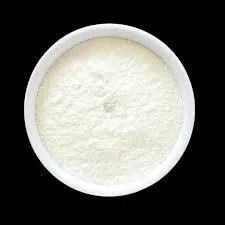
Nov . 28, 2024 01:55 Back to list
Exploring the Applications and Benefits of Propyl Methyl Cellulose in Various Industries
Understanding Propyl Methyl Cellulose A Versatile Polymer
Propyl methyl cellulose (PMC) is a semi-synthetic polymer that falls within the broader category of cellulose derivatives. It mirrors the chemical structure of cellulose, a natural polymer sourced from plant cell walls, but has been chemically modified to enhance its functional properties. This modification makes PMC a versatile compound, widely employed across various industries including food, pharmaceuticals, construction, and cosmetics.
Chemical Structure and Properties
Propyl methyl cellulose is produced by the hydroxyl groups on the cellulose backbone being esterified with propyl and methyl groups. This process alters the hydrophilicity of the original cellulose polymer, yielding a compound that is soluble in water, particularly in hot water, while retaining beneficial properties such as viscosity and gel formation. The degree of substitution of the methyl and propyl groups plays a critical role in determining the solubility, gelation properties, and viscosity of the final product.
One of the noteworthy characteristics of PMC is its ability to form viscous solutions and gels, enabling it to act as a thickening agent and stabilizer. This property is particularly valuable in the food industry, where it is used to improve texture and prevent the separation of ingredients.
Applications in Food Industry
In food processing, propyl methyl cellulose is recognized for its ability to enhance the texture and mouthfeel of various products. It is commonly found in gluten-free baking formulations, where it helps provide elasticity and structure that would otherwise be challenging to achieve without gluten. By binding moisture, PMC retains the freshness of baked goods and extends their shelf life.
Moreover, PMC serves as an effective emulsifier and stabilizer in sauces, dressings, and dairy products. Its water-binding characteristics prevent syneresis, the separation of liquid from the gel, ensuring a consistent product. Additionally, PMC's low-calorie nature makes it an appealing choice for health-conscious consumers seeking lower-fat or lower-calorie options.
propyl methyl cellulose

Pharmaceutical Uses
Beyond its culinary applications, propyl methyl cellulose plays a crucial role in the pharmaceutical industry. It is utilized as an excipient in drug formulations, serving as a binder, stabilizer, and controlled release agent in tablets and capsules. Its controlled-release properties enhance the bioavailability of certain medications, allowing for more effective dosing regimens.
In ophthalmology, PMC is employed in eye drops as a lubricating agent, alleviating dryness and discomfort. By forming a protective film over the eye's surface, it provides sustained relief from irritation while also facilitating the delivery of therapeutic agents.
Role in Construction and Cosmetics
In construction, propyl methyl cellulose is used as a thickener and water-retaining agent in cement-based materials. It helps improve the workability of mortars and plasters, ensuring that they retain moisture for optimal curing and adhesion properties. The inclusion of PMC in construction materials enhances their performance while also contributing to durability.
The cosmetics industry benefits from PMC's versatility as well. It is utilized in lotions, creams, and hair products to enhance texture and stability. Its film-forming capabilities prevent water loss in skin care products, making it an essential ingredient for moisturizers.
Conclusion
Propyl methyl cellulose is a multifaceted polymer that exemplifies the intersection of natural and synthetic materials. Its unique properties make it an invaluable ingredient across many industries, from food to pharmaceuticals, construction, and cosmetics. As research and technology advance, the applications for PMC are likely to expand further, solidifying its status as a key player in the formulation of innovative products. Its ability to balance function and safety ensures it will remain relevant in an ever-evolving market focused on quality and efficacy.
-
Versatile Hpmc Uses in Different Industries
NewsJun.19,2025
-
Redispersible Powder's Role in Enhancing Durability of Construction Products
NewsJun.19,2025
-
Hydroxyethyl Cellulose Applications Driving Green Industrial Processes
NewsJun.19,2025
-
Exploring Different Redispersible Polymer Powder
NewsJun.19,2025
-
Choosing the Right Mortar Bonding Agent
NewsJun.19,2025
-
Applications and Significance of China Hpmc in Modern Industries
NewsJun.19,2025







